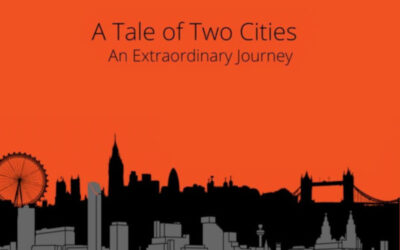Resilience is in the Eye of the Beholder

What makes up a resilient person or a resilient team? Burnley Football Club’s manager, Sean Dyche, seems to value the quality of resilience quite highly. He will often praise the resilience of his team after having fallen behind a goal and then gone onto win the game, he also talks about the importance of carrying resilience into competition. This would suggest that he interprets resilience as something reactive, but also something that can be cultivated, stored and applied when needed in preparation for adversity.
This demonstrates the vast interpretations of the term resilience, in research circles it can be examined in the context of traumatic events and the individual’s ability to maintain relative physical and psychological health (Bonanno, 2004), this is far removed from the relative adversity of conceding a goal in a football match. Within working environments employers desire resilient personnel, this may mean displaying favourable behaviours like embracing challenges, bouncing back from adversity or change (CIPD, 2011). Resilience is therefore a theoretical, contextual and evidenced based concept.
One suitable definition carefully derived from analytical research is: “Resilience is the process of effectively negotiating, adapting to, or managing significant sources of stress or trauma. Assets and resources within the individual, their life and environment facilitate this capacity for adaptation and ‘bouncing back’ in the face of adversity. Across the life course, the experience of resilience will vary” (Windle, 2011). Like resilience, the word hope is often misconstrued and connotes a sense of wishful thinking, but what hope really means is moving toward personal goals, hope is “the will and the ways” (Snyder et al., 1991). Positive emotions can provide the impetus, or will, to work towards achievable goals.
The broaden and build theory (Fredrickson, 2001) taps into the expansive research relating to positive emotions and the accrual of personal resources that promote a resilient individual. Not only do positive emotions feel good in the present moment, they also trigger favourable thought patterns and behaviours that ameliorate well-being in an upward spiral of positivity. Gratitude is a core theme that runs throughout the course, each week participants write down three things they are grateful for in the present moment, research indicates that the process of expressing gratitude enhances well-being through positive emotions such as contentment, happiness and pride (Mongrain & Anselmo-Matthews, 2012).
The upshot of these positive emotions is that they naturally stimulate positive behaviours. One study indicated that that practicing gratitude consistently over a 13-day period were more likely to offer emotional support to another (Emmons & McCullough, 2003) and this can help to establish new and meaningful relationships. Acquisition of a stronger social network is a resource that can assist people to “bounce back” in times of adversity and therefore can be considered a meaningful aspect of resilience.
Bonanno, G. A. (2004). Loss, trauma, and human resilience: have we underestimated the human capacity to thrive after extremely aversive events? Am Psychol, 59(1), 20-28. doi:10.1037/0003-066X.59.1.20
CIPD. (2011). Developing resilience: An evidenced based guide for practioners. Retrieved from https://www.cipd.co.uk/knowledge/culture/well-being/resilience-report
Coventry University. Positive Psychology in Action. Retrieved from https://hopeprogramme.coventry.ac.uk/courses/
Emmons, R. A., & McCullough, M. E. (2003). Counting blessings versus burdens: An experimental investigation of gratitude and subjective well-being in daily life. Journal of Personality and Social Psychology, 84(2), 377-389. doi:10.1037/0022-3514.84.2.377
Fredrickson, B. L. (2001). The role of positive emotions in positive psychology. The broaden-and-build theory of positive emotions. Am Psychol, 56(3), 218-226.
Mongrain, M., & Anselmo-Matthews, T. (2012). Do positive psychology exercises work? A replication of Seligman et al. (2005). Journal of Clinical Psychology, 68(4), 382-389. doi:10.1002/jclp.21839
Snyder, C. R., Harris, C., Anderson, J. R., Holleran, S. A., Irving, L. M., Sigmon, S., . . . Harney, P. (1991). The Will and the Ways: Development and Validation of an Individual-Differences Measure of Hope. Journal of Personality & Social Psychology, 60(4), 570-585.
Windle, G. (2011). What is resilience? A review and concept analysis. Reviews in Clinical Gerontology, 21(2), 152-169. doi:10.1017/S0959259810000420
A Tale of Two Cities
A Tale of Two Cities“There is prodigious strength in sorrow and despair.” As the end of term arrives, I have found myself reflecting on the...
Resilient Metaphors: Is Your Glass Half Full?
Resilient Metaphors: Is Your Glass Half Full?“The essence of metaphor is understanding and experiencing one kind of thing in terms of another,”....
Resilience and the Athletic Mind
Resilience and the Athletic MindExecutive functions make up the system that controls higher-order cognitive processes such as planning, decision...



